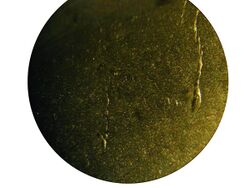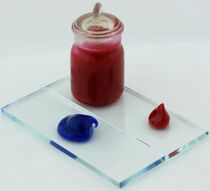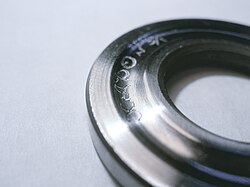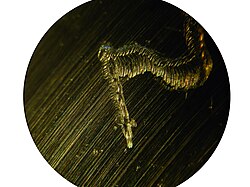Chemistry:Revitalizant
Revitalizant (Latin: vita — life, can be literally translated to “bringing back to life”) is a semi-permanent treatment for metals found in automobile engines, transmissions, fuel pumps, and other friction surfaces in industrial and other machines. The treatment is added to the engine oil, operating fluids, or fuel. The treatment forms a protective cermet or ceramic-metal coating on the friction metal parts of the mechanisms directly during the process of their operation. The Revitalizant solves the problem of non-wear operation of cars and mechanisms.[1]
History

The Revitalizant was developed in 1998 in Kharkiv (Ukraine ) by XADO. The composition and the method of its preparation are patented. The notion was included in the textbook on tribology.[2]
Description
Visually it is a gel or a plastic substance. It consists of a lubricant and a mixture of oxides and metal oxide hydrates: Al2O3 and/or SiO2 and/or MgO and/or CaO and/or Fe2O3 etc., with dispersion from 100 to 10,000 nanometers.
Properties
- Under certain conditions (pressure and temperature) typical for the contact of the parts during friction, the substances contained in the revitalizant act as a catalyst for creating the metal carbide of coupling materials.
[math]\displaystyle{ \mathrm{n Me + m C \rightarrow Me_nC_m }, }[/math]
where Me stands for metal; C - carbon.
- Particles of the substance have the form similar to the spherical and during the process of friction they are acting as surface hardening and at the same time as rolling substances, reducing the friction coefficient.
Process
The process of the protective coating formation, called revitalization, is based on physical-chemical interaction between surfaces of the parts on the spots of virtual contact covered with revitalizant in a boundary or mixed lubrication mode. As a result a gradient cermet coating is formed, containing positive compressive stresses all over its depth and concentration of carbon, increasing at the surface (up to the formation of diamond-like structures). Distinctive feature of the process is a hardening of the coating with its simultaneous growth[3]
Application
Used in the manufacture of lubricants, greases and additives.
References
- ↑ Garkunov, D. N. Tribotechnika. Moscow: Mashinostrojenie, 1985: 424 p. (in Russian).
- ↑ Kindrachuk, M. V., Labunetz, V. F., Pashechko, M.I., Korbut, Ye.V. Tribologia: textbook / Ministry of Education and Science. – Kyiv: NAU-print, 2009. – 392 p. (in Ukrainian).
- ↑ Dzhus R. N. System-physic approach to the explanation of anti-wear friction with the use of revitalizants / /Public Information and Computer Technology: Collection of scientific papers. 23rd Publication – Kharkiv: National Aerospace University "Kharkiv Aviation Institute". – 2004. – P.183-186 (in Russian)
 |





